


 Many Hawaiians served in World War I and will serve in World War II as well.
Many Hawaiians served in World War I and will serve in World War II as well.
The National Guard of Hawaii replaced the Regular Army garrison regiments at Schofield Barracks and other Hawaiians volunteered for war service. Manpower for sugar production was surprisingly more critically needed than soldiers, reason why the draft quotas of Hawaii were limited to the strict logistical minimum.
The first German prisoners of war taken by the United States were the crew of the gunboat Geier, interned in Honolulu harbor when World War I broke out. Needless to say, there was a strong Anti-German feeling at the time. The US Navy then commissioned her as USS Schurz and placed her on convoy duty before sinking, June 21st, 1918, due to a collision with a freighter off the coast of North Carolina.
World War I which was to be the “War to End All Wars” failed to create a lasting peace.
President Woodrow Wilson had warned: “I can predict with absolute certainty that within another generation there will be another world war if the nations of the world do not concert the method by which to prevent it”.
History will prove he was right!
World War I left behind poverty, devastation and desperation. This would soon fuel the rise of fascism and communism in Europe and militarism in Japan, which in turn inflamed racism and imperialism. As Japan’s population increased and its economy worsened, the Japanese military influence grew.
The rise of Fascism in Italy, Nazism in Germany, and Militarism in Japan led to global destabilization and threatened all the democracies.
A stock market crash, Black Friday, sent the United States into economic depression. Military actions by the Japanese in China, the Italians in Ethiopia and the Germans in Poland sowed the seeds of global war, what will be known as World War II.
In response to Japanese aggression in Asia, the United States imposed economic embargos and deployed its Pacific Fleet to Pearl Harbor.
In 1940, Japan saw an opportunity to expand further its empire in East Asia and signed the Tri-Partite Pact with Germany and Italy, creating the Tokyo-Rome-Berlin Axis.
The British, French and Dutch colonies, rich with oil, rubber, tin and other natural resources, lay virtually unprotected while the European powers were struggling against the Third Reich who had annexed Austria in 1938 and invaded Poland in 1939.
Japan therefore believed it could continue its expansion by establishing the “Greater East Asia Co-prosperity Sphere” through which it would be able to gain access to raw materials and dominate markets for manufactured goods, that was the objective!
To do so, Japan was to seize the targeted territories held by the Europeans and establish a strong defensive perimeter, deep in the Pacific and Indian Oceans, then rely on diplomatic negotiations to obtain a satisfactory peace settlement with France, England, and the Netherlands.
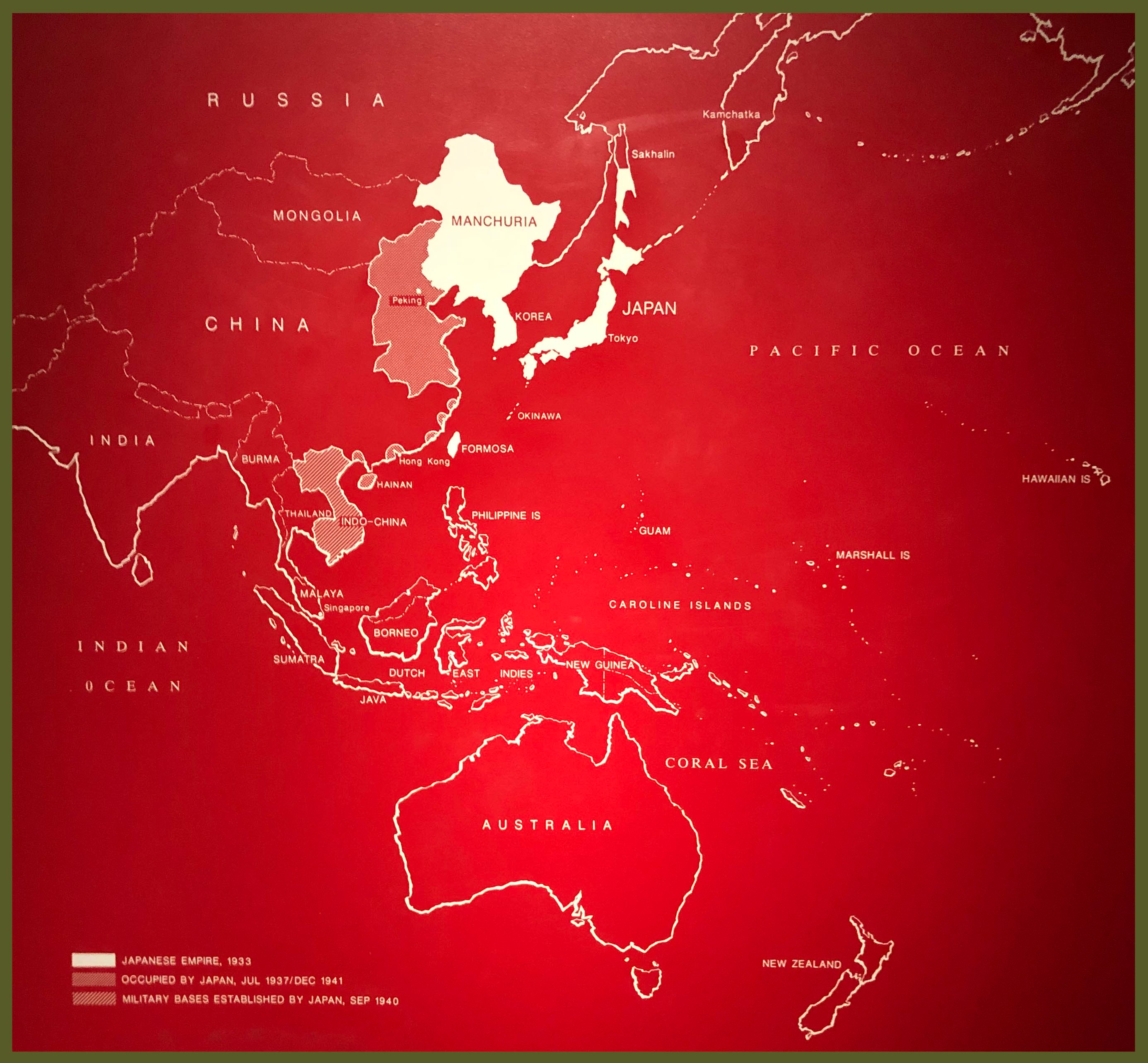
Despite deteriorating relations with Japan and frequent indications of impending war, revealed through routine intelligence reports and decoded intercepted radio messages, many American leaders simply refused to believe that Japan would dare to launch an attack against Hawaii!
The decision made was to continue to reinforce the Philippines.
- The US Navy limited its patrolling with submarines and surface ships to save on fuel!
- Aircraft patrols concentrated on the most likely approaches, south and west.
- The Army considered sabotage to be the main threat, reason why the planes were parked wingtip to wingtip, making them easier to guard.
An air raid warning network of ground observer stations and radar sites was put in place, but not much was done to make it effective, more so to coordinate defense information between the Navy and Army.
Why so? Peacetime routines and attitudes prevailed then!
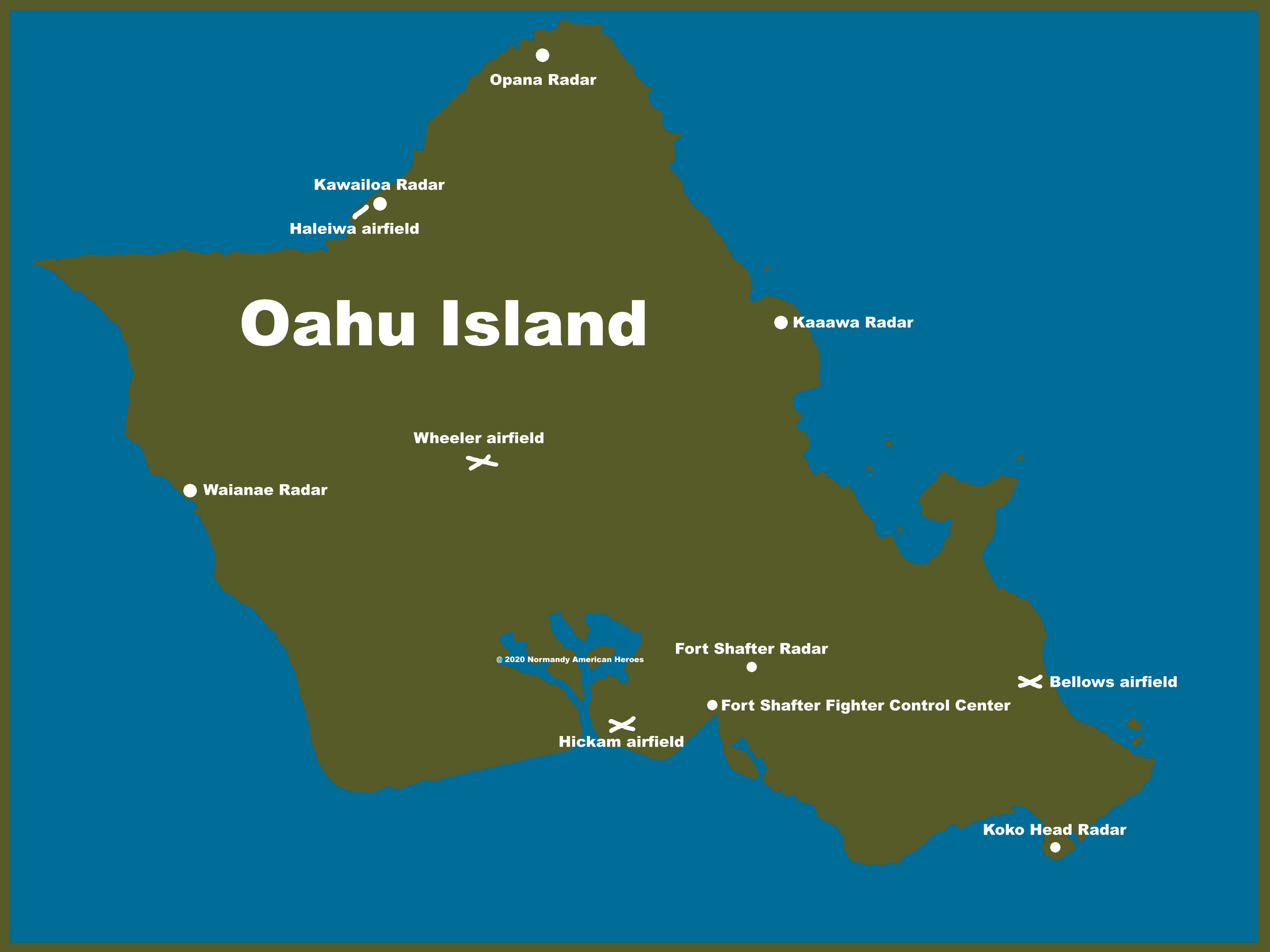
In August 1941, after more than a year of deteriorating diplomatic relations between the United States and Japan, the U.S. Government renewed warnings against further Japanese expansion in Asia.
Negotiations continued, but Hideki Tojo, who became Prime Minister in October would not make any concessions.
His first speech on the radio was clear, he made a call for “world peace” while confirming Japan determination to settle the “China Affair” to achieve the “Greater East Asia Co-prosperity Sphere”!
Note: 7 years later, Hideki Tojo, who assumed full responsibility for his actions during WWII, will be sentenced to death by hanging on November 12th, 1948
On November 5th, 1941, Japan issued war plans, in case negotiations with the United States failed.
Admiral Isoroku Yamamoto ordered the assembly of the Imperial Japanese Navy strike force for the Hawaii Operation attack on Pearl Harbor in Hitokappu Bay, Iturup Island and South Kuril Islands. The territory had been chosen for its sparse population, lack of foreigners, and constant fog coverage.
November 26th, 1941, the negotiations reached the impasse as Japan rejected without compromise the withdrawal of their troops from Indochina and secretly ordered to execute the war plans!
That same day, Admiral Yamamoto ordered the move to Hawaii under radio silence.
Of course, Japan’s plan demanded secrecy and surprise! Storms, fog and icy weather left the northern Pacific nearly deserted in winter, offering therefore the best concealment.
There would be only a slim chance of Admiral Yamamoto navy being detected by passing ships or scouting planes.
On the other hand, poor visibility and heavy seas would complicate navigation, and render the crucial task of refueling in those conditions extremely risky.
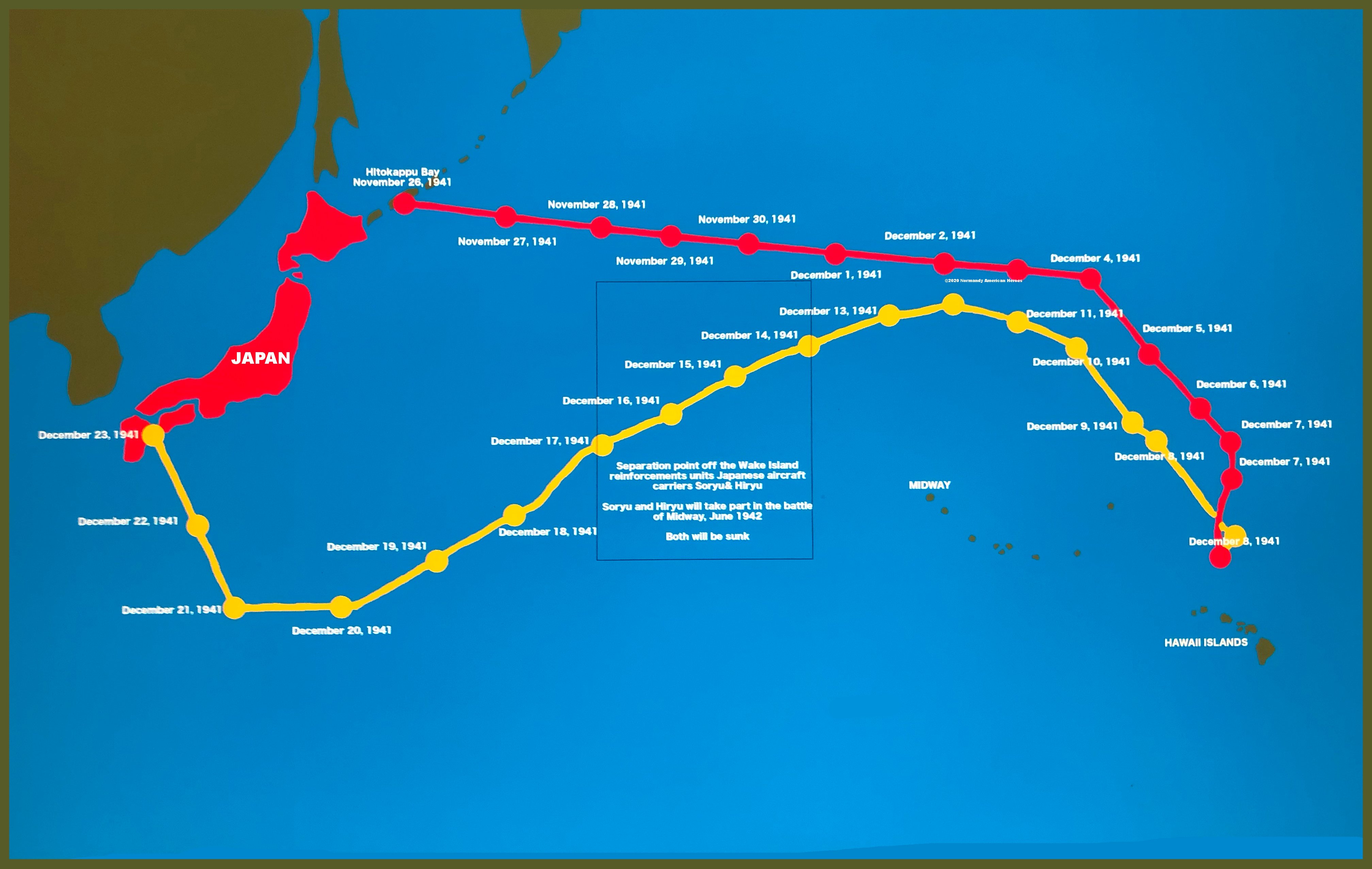
The Japanese reached the launch point north of Oahu UNDETECTED.
A total of 417 planes were transported across the Pacific on six fleet aircraft carriers: Akagi, Kaga, Soryu, Hiryu, Shokau and Zuikaku.
Their missions? To attack all the American installations, facilities on Oahu island.
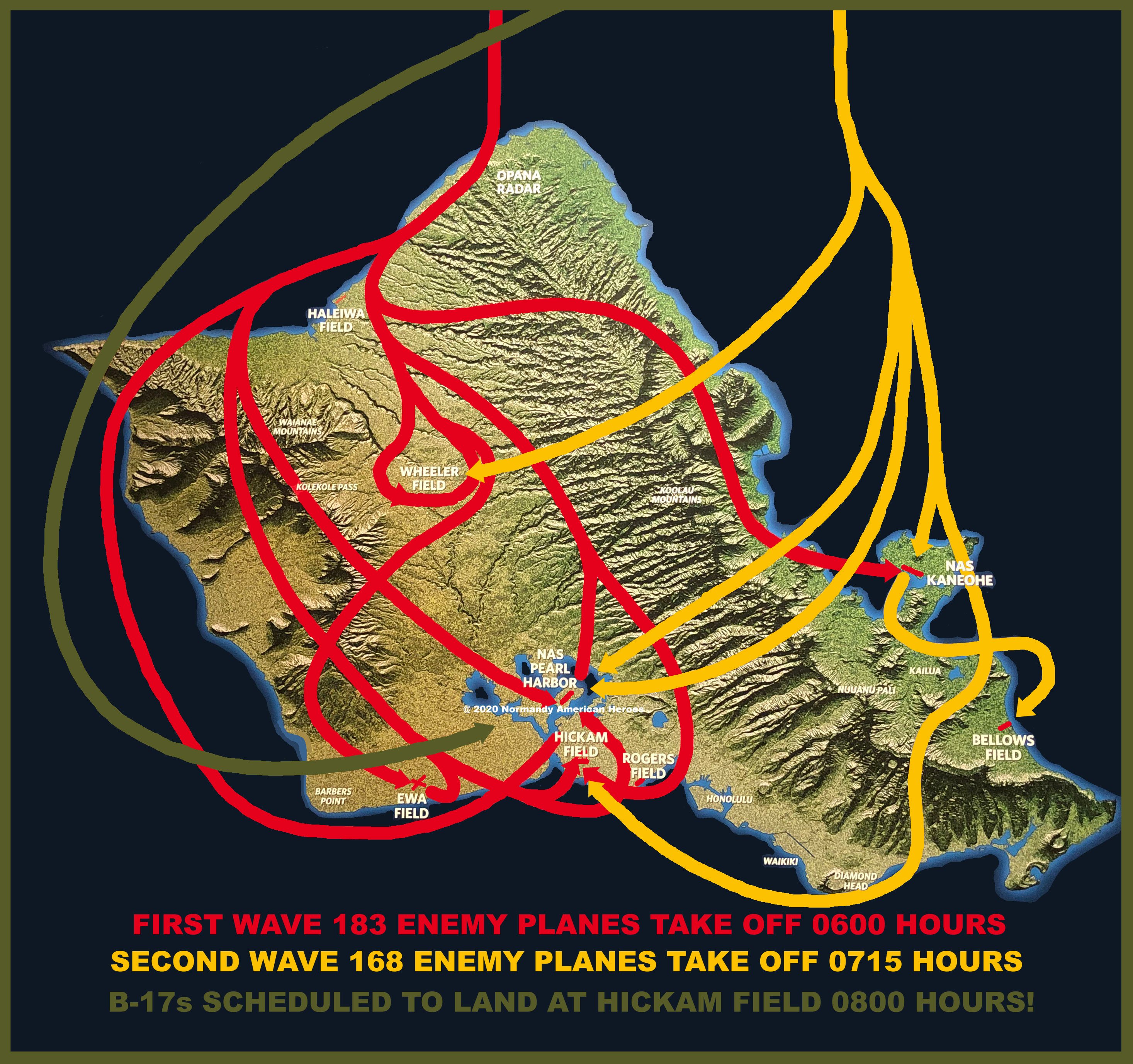
At 0600 hours, in darkness, the first wave of 189 planes took off (6 will abort the mission).
It included 24 Kates armed with Mk 91 torpedoes. They struck the fleet in Pearl Harbor, the garrison at Schofield Barracks, and the airfields at Bellows, Kaneohe, Wheeler and Hickam.

First Warning
At 0643 hours, Lieutenant William W. Outerbridge rushed to his ship’s bridge when advised of an unidentified submarine!
The USS Ward opened fire at 0645 hours. Seaman First Class Alan C. Sanford reported: “Gun number 3 hit at the base of the conning tower and I’m sure it killed that Japanese commander.” The USS Ward dropped depth charges and the midget submarine sank.
At 0654 hours, the USS Ward radioed an uncoded message to naval district headquarters: “We have attacked, fired upon, and dropped depth charges upon submarine operating in defensive sea area”.
Verification was requested in code, a time-consuming process! Officers were alerted and ordered the destroyer USS Monaghan to assist the USS Ward.
Second Warning
While the enemy was flying, at 0702 hours, Private Joseph P. Lockard and George Elliott detected a large, unusual “target” at the mobile radar station of Opana. They called the officer on duty at the Fort Shafter Information Center, 1st Lieutenant Kermit A. Tyler, a pilot temporarily assigned to the center and on his first full day there.
Tyler recalled: “At about 0715 hours I got a call from Private Joseph Lockard, he said it was the biggest plot he had ever seen.” I told him: “Don’t worry about it, it’s OK”.
1st Lieutenant Tyler had every reason to believe they were friendly planes. In fact, a flight of B-17s was due to land at Hickam Field at 0800 hours. He would explain later: “There was no way of telling what they were. The problem was we had no identification people on staff!”.
The Japanese hit their targets just before 0750 hours.
In the raid’s opening minutes, Japanese fighters and dive bombers swooped down on the airfields and began to destroy them as they knew that for their attack to succeed, they had to destroy any aircraft that could detect, oppose or attack them.
Their strategy will pay off as only 13 American planes got airborne!

An American alert was quickly sent: “Air raid Pearl Harbor, this is no drill!”
Though taken totally by surprise, all crews responded swiftly...
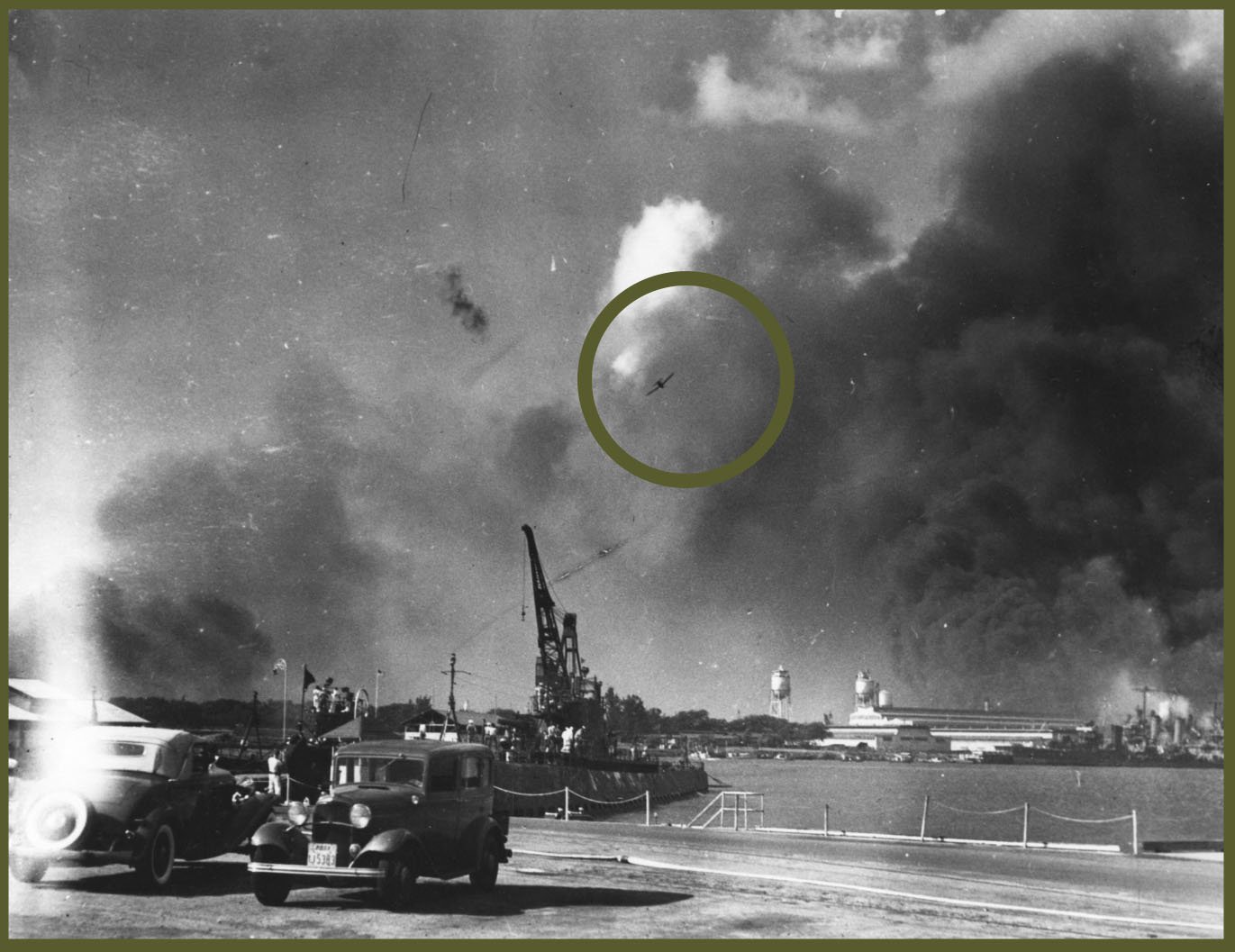
The second wave of 172 planes took off at 0715 hours (4 aborted the mission) while the first wave was still north of Oahu. It included 78 Val dive bombers.
Forty torpedo bombers attacked ships along Battleship Row, 1010 Pier, and the north side of Ford Island.
Torpedoes blasted holes as large as 12 meters (40 feet) wide in heavily armored ships including the Oklahoma, California, West Virginia, Nevada (will be on D-Day in Normandy, objective to destroy Azeville German battery!), Helena, Raleigh and Utah.
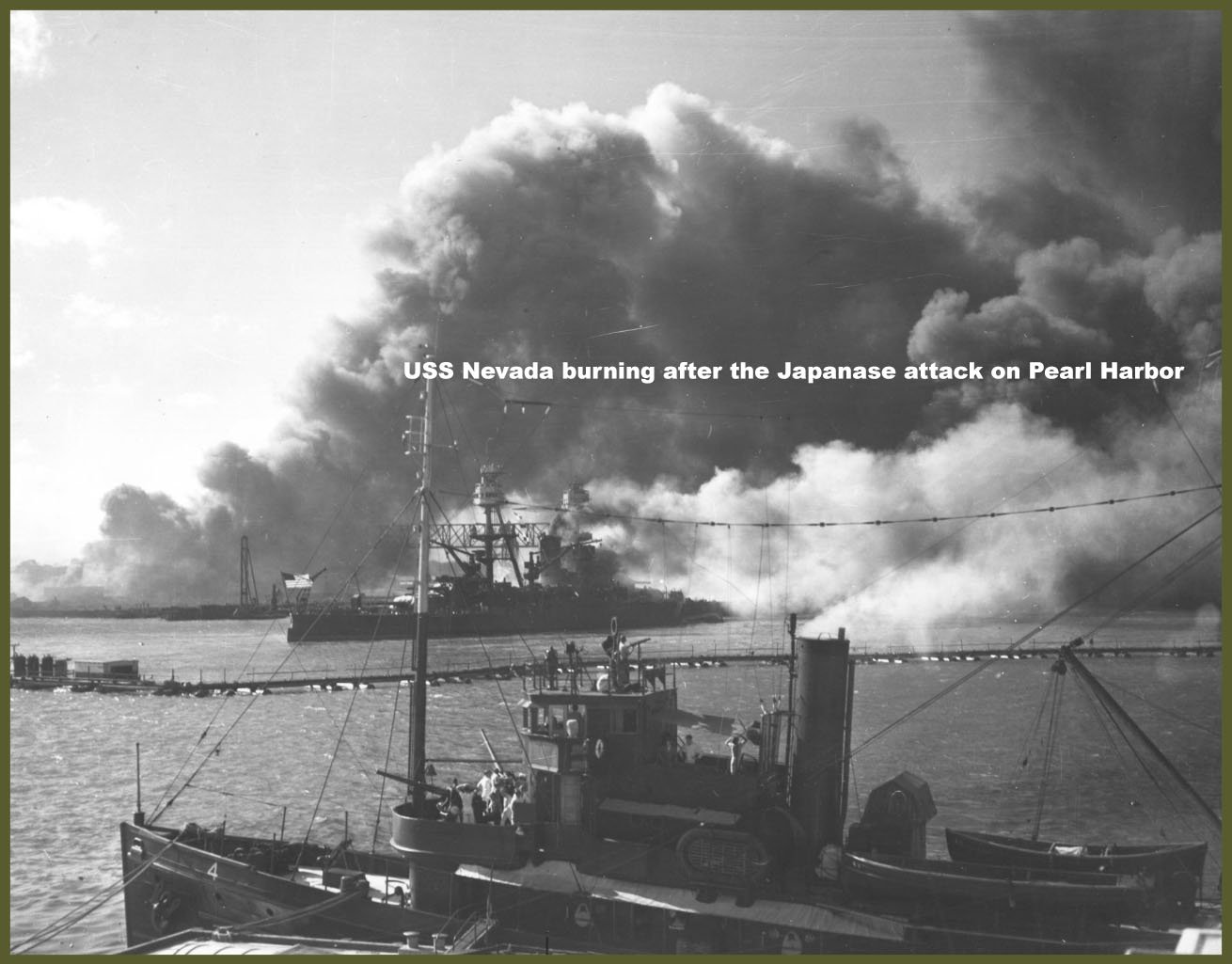
Why were they so accurate?
Lieutenant Jinichi Goto, Akagi torpedo plane pilot will later state: “Three things were the key elements to the attack. Speed must be 160 knots per hour, the nose must be horizontal to the sea and altitude 20 meters.”
Needless to say, it proved lethally effective flown by skillful Japanese pilots.
Japanese dive-bombers hit the destroyer USS Shaw. Fire ignited its forward magazines; the resulting explosion broke the ship in two.
The USS Oklahoma hit as well will capsize in just 11 minutes! Sailors and shipyard workers quickly climbed onto the overturned hull and began searching for survivors.
One sailor who had escaped from the ship reported that 125 men were trapped in a single compartment.
Rescuers cut through the hull and saved 32 men in the first 24 hours! In all, 429 men died aboard the battleship.
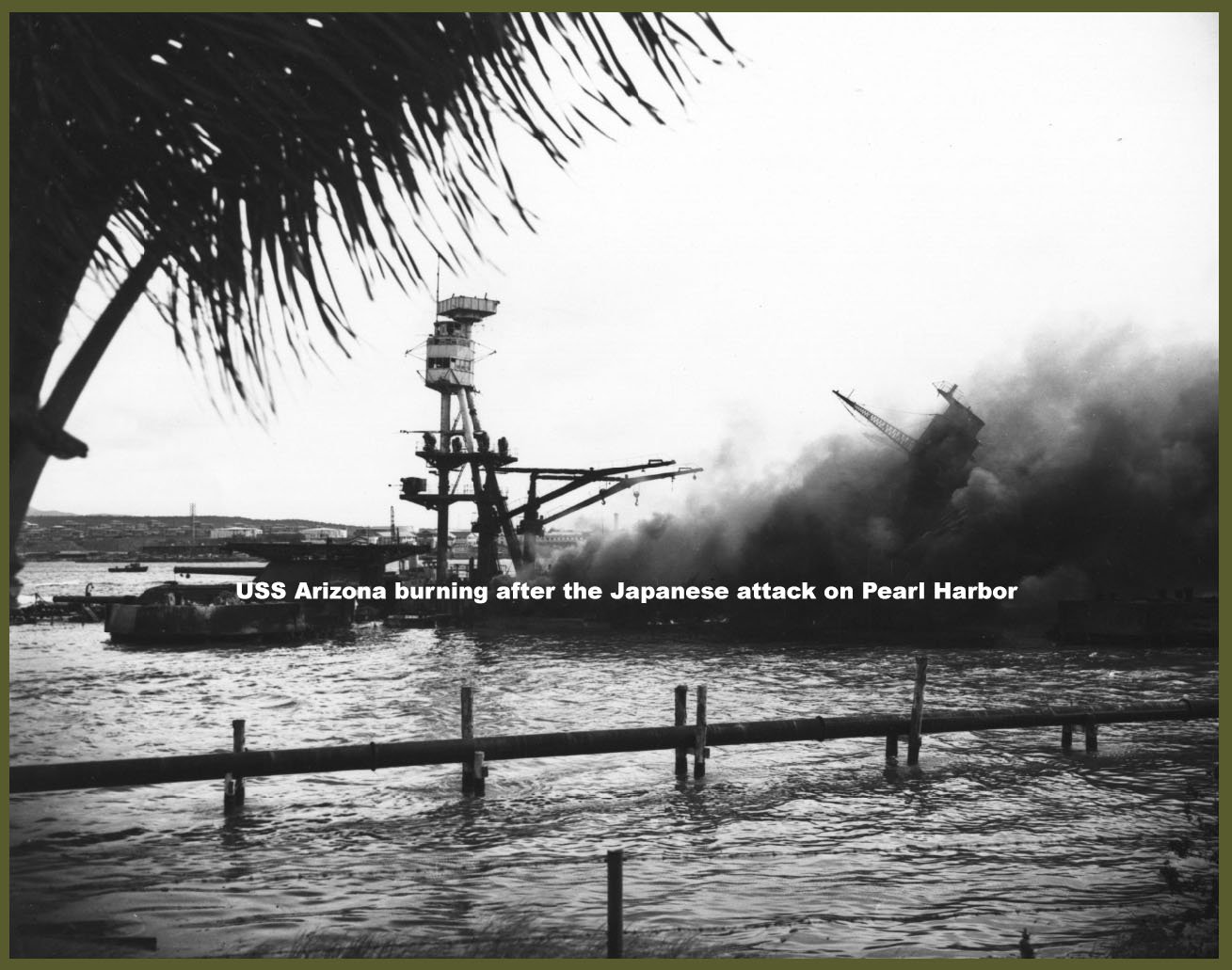
Around 0806 hours, an 800-kilogram (1,760 pound) armor-piercing bomb penetrated the USS Arizona forward deck, detonating an ammunition magazine and setting off a destructive explosion.
It was dropped by a Kate at high-altitude (almost 10,000 feet). An immense fireball came out from ship! Instantly destroyed and engulfed in flames, the USS Arizona sank within minutes, taking the lives of 1,177 officers, sailors and Marines.
The battleship will burn out of control for 2 ½ long days.
By 0955 hours the attack was over.
The Japanese only lost 29 planes and five midget submarines!
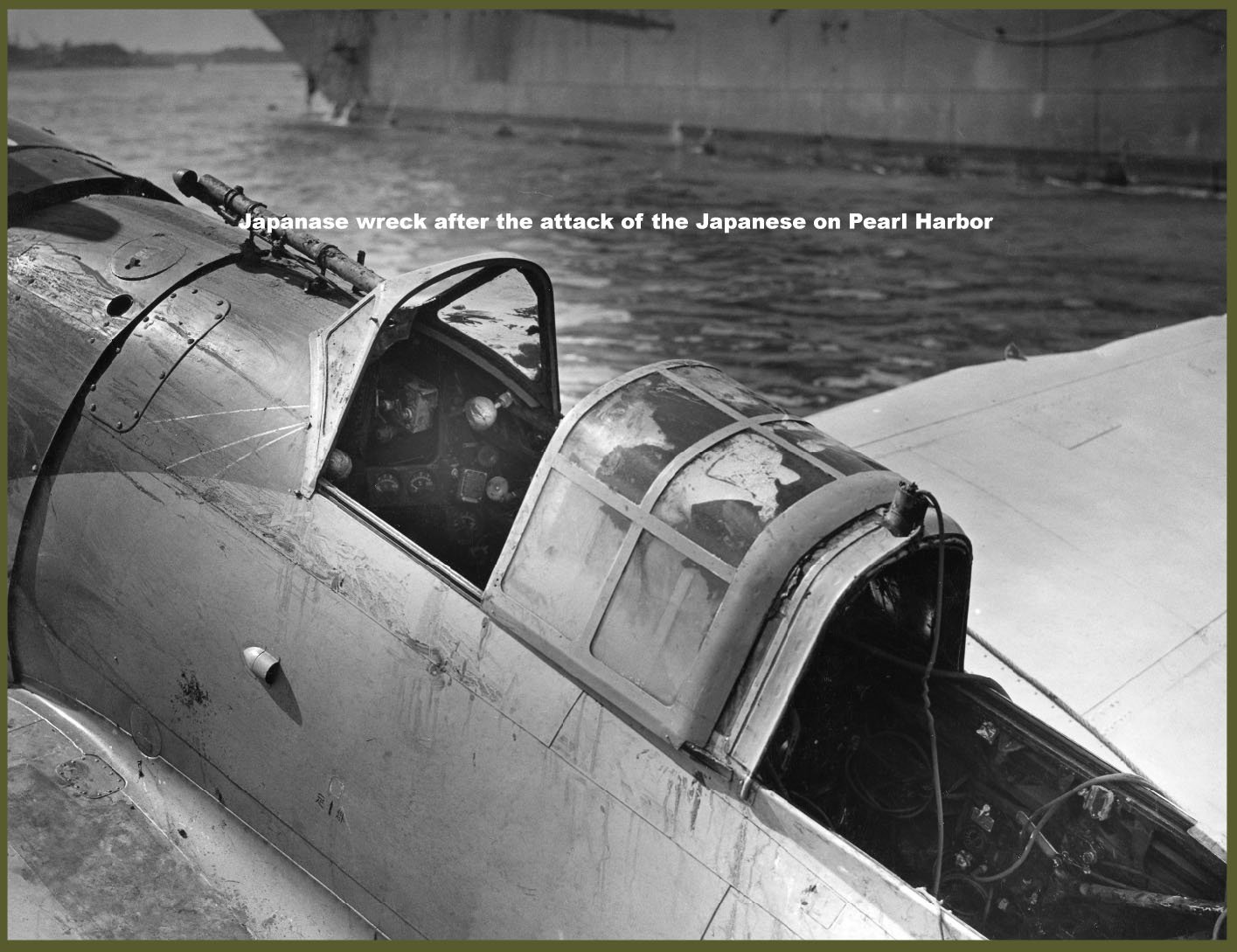
“Tora! Tora! Tora!” Surprise was complete! These Japanese code words meant that surprise was complete.
How was this possible?
To better understand the Japanese Naval Air Power, we must take into account that fact that Japan had recognized its potential way before the US.
In 1941, Japan was producing the most advanced aircraft and had built a powerful fleet of aircraft carriers!
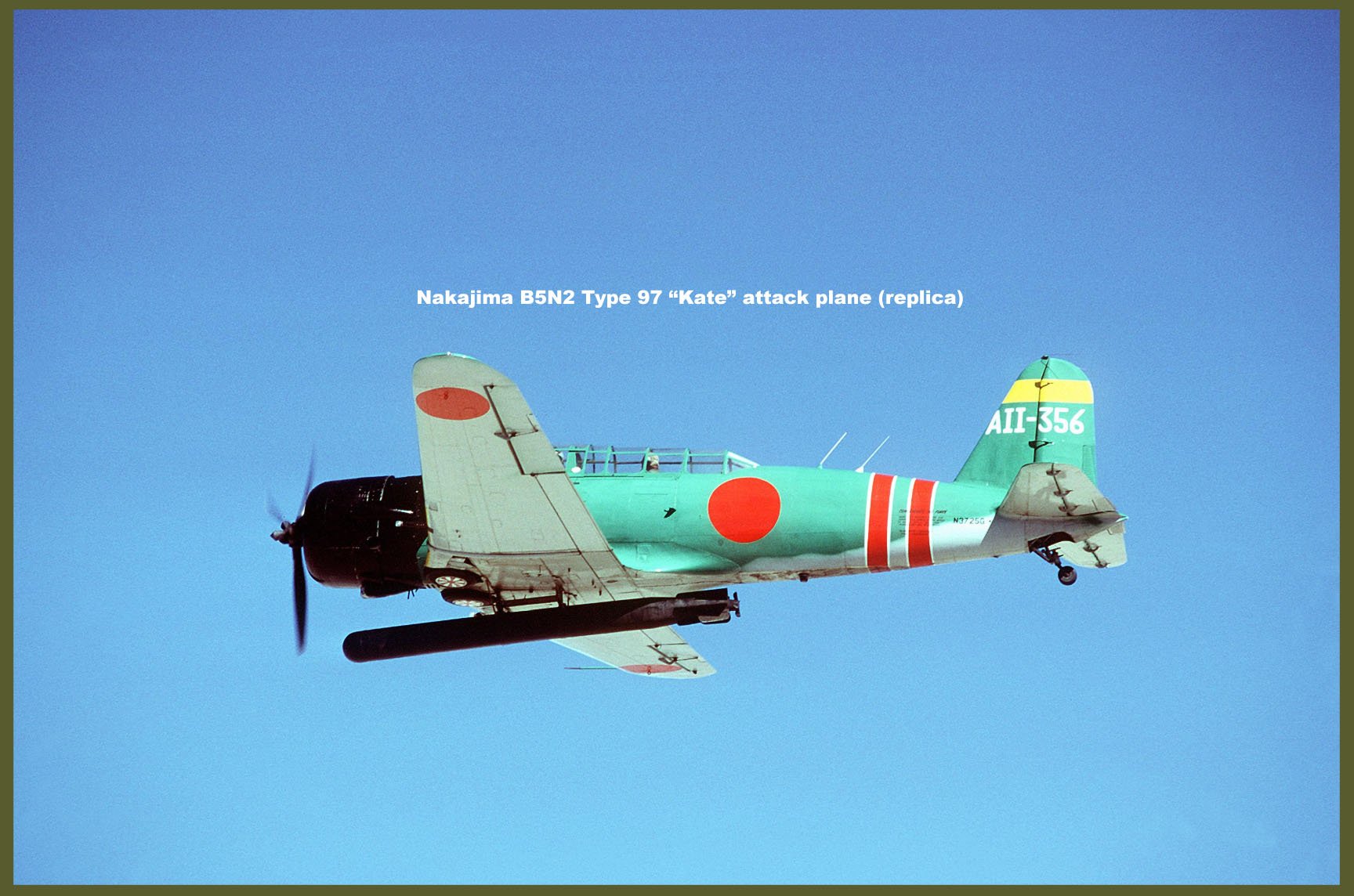
Why so? The Japanese you could say had learned from history!
After the successful attack by British carrier planes on the Italian fleet at Taranto in 1940, the Japanese were convinced of their success at Pearl Harbor having highly trained pilots and superior planes that no one could compete with at the time.
- Nakajima Type 97 "Kate" attack plane, both a torpedo plane and level bomber considered the most advanced plane of its type in service anywhere!
- Aichi Type 99 "Val" dive bomber used to attack ground targets and ships, highly maneuverable, when in the hands of a skilled pilot, it would then become a very efficient dogfighter!
-Mitsubishi Type 0 "Zero" was, at the time, the most advanced fighter plane. It could easily outperform any other fighter in service. It was used to escort the attack bombers, strafe airfields and ground targets.
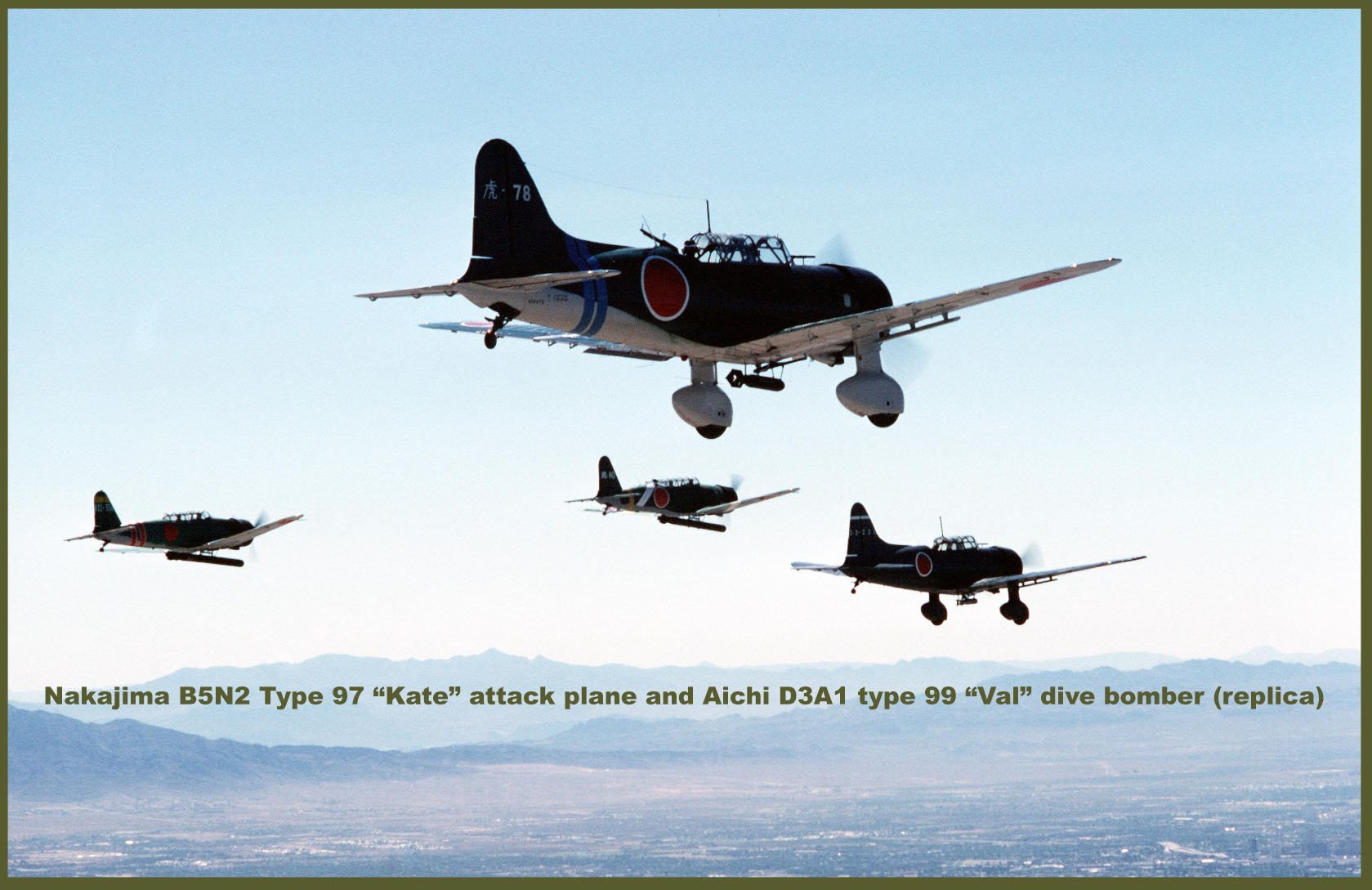
U.S. Air Force Targets on June 7th, 1941
Beginning at 0755 hours, groups of Japanese attackers swooped down on the Army airfields. Showing great skill at low-level flying, and accurate marksmanship with bombs and machine gun fire, the Japanese blasted away the neatly parked American planes.
The majority of the planes at Wheeler Field were actually not ready to fly and/or were obsolescent. Worse, ammunition was unloaded every evening for security… the reality is that they would not have had the time to fight back.
By destroying the Hawaiian Air Force’s fighters and bombers on the ground, the Japanese prevented interception or retaliation against their aircraft carriers.
Colonel William Flood stated: “I could see some of the Japanese pilots lean out of their planes and smile…I could even see the gold in their teeth!”
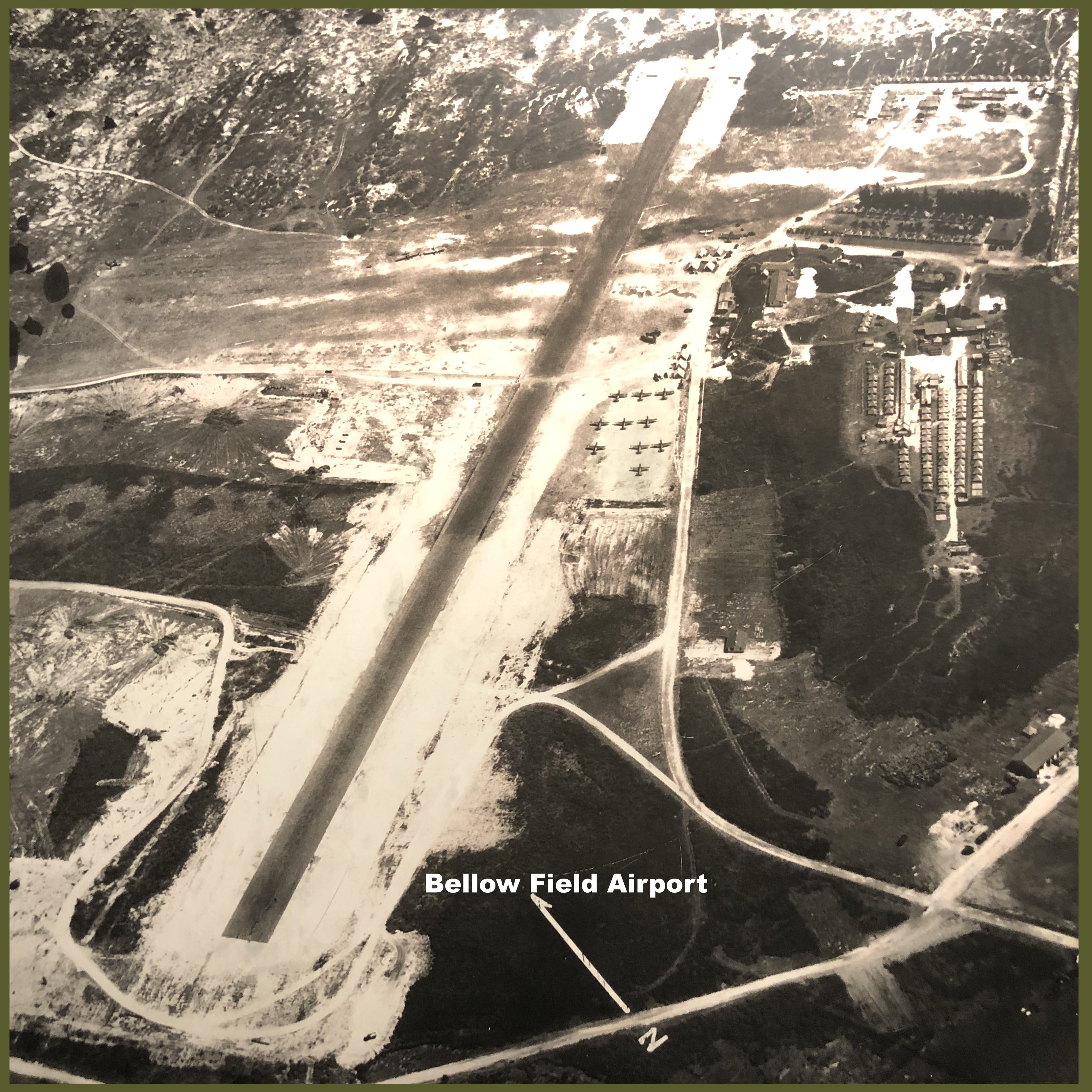
Once the initial shock wore off, soldiers and airmen at all Army installations ran into action.
Anti-aircraft crews manned their guns, pilots scrambled for their planes and everyone who could fire, fired at the Japanese planes!
2nd Lieutenant Kenneth M. Taylor and 2nd Lieutenant George S. Welch raced by car from Wheeler to the dispersal field at Haleiwa to get their fighter planes into the air.
They will succeed and shoot down four enemy planes. Both will receive the DSC.
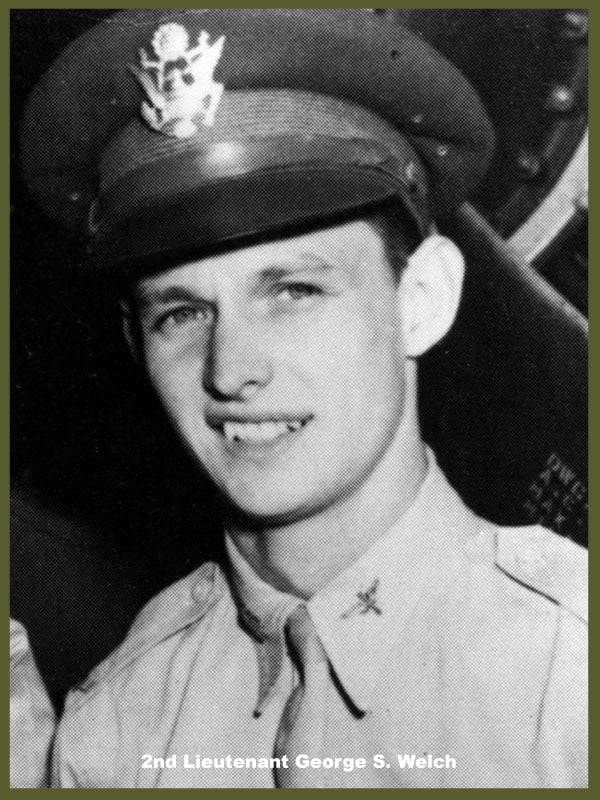 Distinguished Service Cross citation of Second Lieutenant George S. Welch, born May 10th, 1918 in Wilmington, Delaware.
Distinguished Service Cross citation of Second Lieutenant George S. Welch, born May 10th, 1918 in Wilmington, Delaware.
George Welch was the first American Air Force pilot to shoot down a Japanese airplane in the Pacific.
He continued to serve throughout the war, becoming a U.S. Army Air Forces TRIPLE ACE, credited with destroying 16 enemy aircraft in aerial combat. After the war he transferred to the new U.S. Air Force. On October 12, 1954, he was killed testing an F-100 Super Sabre.
The President of the United States of America, authorized by Act of Congress, July 9, 1918, takes pleasure in presenting the Distinguished Service Cross to Second Lieutenant (Air Corps) George Schwartz Welch (ASN: 0-398557), United States Army Air Forces, for extraordinary heroism in connection with military operations against an armed enemy while serving as Pilot of a P-40 Fighter Airplane in the 47th Pursuit Squadron, 18th Pursuit Group, Hawaiian Air Force, in action over the Island of Oahu, Territory of Hawaii and waters adjacent thereto, on 7 December 1941.
When surprised by a heavy air attack by Japanese forces on Wheeler Field and vicinity at approximately 8 a.m., Lieutenant Welch left Wheeler and proceeded by car, under fire, to Haleiwa Landing Field, approximately ten miles distance, where his squadron's planes were stationed. Immediately, on his own initiative, he took off for the purpose of attacking invading forces, without first obtaining information as to number or type of Japanese in the attacking force and proceeded to his initial point over Barbers Point. At time of take-off, he was armed only with thirty-caliber machine guns. Upon arrival over Barbers Point, he observed a formation of approximately twelve planes over Ewa, about 100 feet below and ten miles away. Accompanied by only one other pursuit ship, he immediately attacked this enemy formation, shooting down an enemy dive bomber with one burst from three .30-caliber guns. At this point one .30 gun jammed. While engaged in this combat, his plane was hit by an incendiary bullet which passed through the baggage compartment just in rear of his seat. He climbed above the clouds, checked his plane, returned to the attack over Barbers Point and immediately attacked a Japanese plane running out to sea, which he shot down, the plane falling in the ocean. No more enemy planes in sight, he proceeded to Wheeler to refuel and replenish ammunition. Refueling and reloading completed but before repairing guns, a second wave of about fifteen enemy planes approached low over Wheeler. Three came at him and he immediately took off, headed straight into the attack and went to the assistance of a brother officer being attacked from the rear. This enemy plane burst into flames and crashed halfway between Wahiawa and Haleiwa. During this combat his plane was struck by three bullets from the rear gun of the ship he was attacking, one striking his motor, one the propeller and one the cowling. This attack wave having disappeared he returned to the vicinity of Ewa and found one enemy plane proceeding seaward, which he pursued and shot down about five miles offshore, immediately thereafter returning to his station at Haleiwa Landing Field.
Lieutenant Welch's initiative, presence of mind, coolness under fire against overwhelming odds in his first battle, expert maneuvering of his plane, and determined action contributed to a large extent toward driving off this sudden unexpected enemy air attack. Second Lieutenant Welch's unquestionable valor in aerial combat is in keeping with the highest traditions of the military service and reflects great credit upon himself, the Hawaiian Air Force, and the United States Army Air Forces.
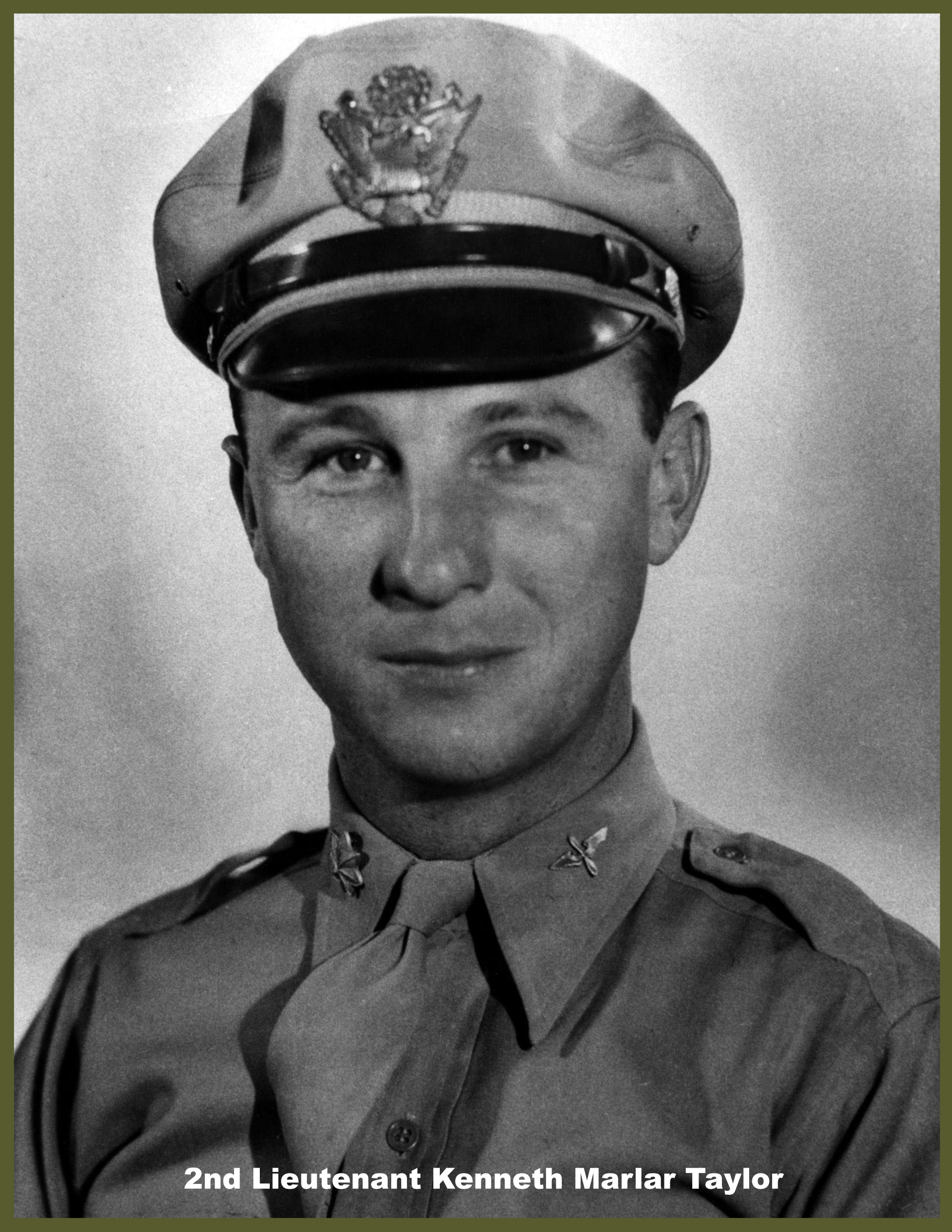 Distinguished Service Cross citation of 2nd Lieutenant Kenneth Marlar Taylor, born December 23rd, 1919 in Enid, Oklahoma.
Distinguished Service Cross citation of 2nd Lieutenant Kenneth Marlar Taylor, born December 23rd, 1919 in Enid, Oklahoma.
He was the first American Airman to earn the DSC in World War II.
He was credited with destroying three enemy aircraft in aerial combat during World War II. After serving in the Army Air Forces in World War II, he transferred to the U.S. Air Force when it became a separate branch of service in 1947. He retired in 1971 as a U.S. Air Force Brigadier General.
The President of the United States of America, authorized by Act of Congress, July 9, 1918, takes pleasure in presenting the Distinguished Service Cross to Second Lieutenant (Air Corps) Kenneth Marlar Taylor (ASN: 0-409061), United States Army Air Forces, for extraordinary heroism in connection with military operations against an armed enemy while serving as Pilot of a P-40 Fighter Airplane in the 47th Pursuit Squadron, 18th Pursuit Group, Hawaiian Air Force, in aerial combat against enemy forces on 7 December 1941, in action over the Island of Oahu, Territory of Hawaii, and waters adjacent thereto.
When surprised by a heavy air attack by Japanese forces on Wheeler Field and vicinity at approximately 8 a.m., Lieutenant Taylor left Wheeler Field and proceeded by automobile under fire, to Haleiwa Landing Field, a distance of approximately ten miles, where the planes of his squadron were stationed. He immediately, on his own initiative, took off for the purpose of attacking the invading forces, without first obtaining information as to the number or type of planes in attacking forces, and proceeded to his initial point over Barbers Point. At take-off time his plane was equipped with thirty-caliber machine guns only. Upon arrival over Barbers Point, he observed a formation of approximately twelve planes over Ewa, about 1,000 feet below and ten miles away. Accompanied by only one other pursuit plane, he immediately attacked this enemy formation and shot down two enemy planes. No more enemy planes in sight, he proceeded to Wheeler to refuel and replenish ammunition. Reloading completed, but ammunition boxes not removed, a second wave of enemy planes attacked, approaching directly toward him at low altitude. Although advised not to go up again, Lieutenant Taylor made a quick take-off ending in a chandelle, thereby saving his plane as he escaped from a superior force of eight to ten planes by climbing into clouds. Lieutenant Taylor's initiative, presence of mind, coolness under fire against overwhelming odds in his first battle, expert maneuvering of his plane, and determined action contributed to a large extent toward driving off this sudden, unexpected attack.
Second Lieutenant Taylor's unquestionable valor in aerial combat is in keeping with the highest traditions of the military service and reflects great credit upon himself, the Hawaiian Air Force, and the United States Army Air Forces.

Captain Frank Ebey, 55th Coast Artillery based at Fort Kamehameha, ordered his men to setup a machine gun on his quarters’ tennis court! His men shot down a “Zero”!
At Schofield Barracks, 2nd Lieutenant Stephen Saltzman and Sergeant Lowell Klatt of the 98th Coast Artillery, each grabbed a Browning automatic rifle and succeeded in shooting down a Japanese plane. 2nd Lieutenant Saltzman would later state: “I was too mad to be scared!”
Note: Let’s not forget that when the United States entered WWI, you didn’t have an American made machine gun like the Germans who were using them with devastating results! This is when comes into action the famous Browning water-cooled machine gun that the US Government easily adopted when during testing, it was able to fire flawless 28,000 rounds in a 48-minutes burst!
Silver Star citation of 2nd Lieutenant Stephen G. Saltzman
The President of the United States of America, authorized by Act of Congress, July 9, 1918, takes pleasure in presenting the Silver Star to Second Lieutenant (Coast Artillery) Stephen G. Saltzman, United States Army, for gallantry in action while serving with a Coast Artillery Regiment at Wahiawa, Territory of Hawaii, during the Japanese aerial attack on 7 December 1941, where he brought down a Japanese airplane with his automatic rifle.
Along with Staff Sergeant Lowell V. Klatt, Second Lieutenant Saltzman voluntarily and on his own initiative without regard for his own safety, left the shelter of the Command Post in the face of heavy fire from enemy planes. He coolly waited in an exposed position until one of the enemy planes approached within 100 yards, and then delivered armed automatic rifle fire at one of the two enemy planes. His fire, combined with that of Sergeant Klatt, caused the plane to crash, resulting in the destruction of the ship and crew.
The cool determination and disregard for his personal safety displayed by Second Lieutenant Saltzman was an inspiration to members of his regiment.
Staff Sergeant Lowell V. Klatt received also the Silver Star with the same citation

Even though Pearl Harbor armada was the main target, the Japanese had also planned to hit also military targets in Honolulu. It totally surprised Honolulu’s people, but they reacted quickly to keep emergency services, police, fire, hospitals functioning while the bombs fell!
Like in any battle, stray bombs and bullets will fall on civilians, killing 68 and wounding 35.
Ironically, the worst damage in Honolulu civilian community was from a U.S. Navy 5-inch anti-aircraft shells, whose time fuses failed to explode in the air! When it fell back in Honolulu McCully and King Streets, a major fire broke out, luckily with no victims to be accounted for.
Despite taking totally by surprise t

















